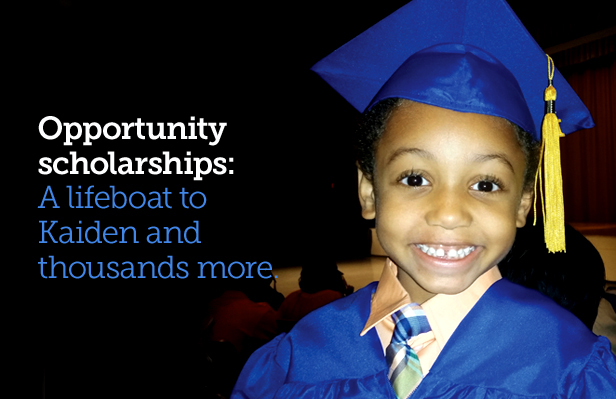The Long and Winding Road. In addition to being a great song by the Beatles, this phrase sums up my family’s educational journey. My children spent time in a local public school, a Catholic school, and a cyber charter school before our long and winding road led us to homeschool.
When people hear “school choice” or “educational choice,” various images may come to mind. But the beauty of choice is that it doesn’t have to mean the same thing for everyone. At every stage of our long and winding road, I was exercising educational choice for my children.
Traditional brick and mortar public schools. Nationwide, almost 90 percent of students attend a traditional public school. For many families, this works well. Two of my daughters attended our local public kindergarten, which I liked because it was within walking distance and it was half day.
The problem is when students must attend the local school because they have no other alternatives. There are a variety of reasons why a family might not choose the local public school, such as safety, size, academics, or atmosphere. Even in the so-called “best” school districts, some parents will choose another option. Universal school choice, including tax credit scholarships or education savings accounts (ESAs), would empower all parents to make that decision for their children.
Charter schools. The fastest growing type of school, charter schools are independently-operated public schools that have more flexibility than traditional public schools. In the last decade, brick and mortar charter school enrollment has tripled to more than 3 million students.
According to the National Alliance for Public Charter Schools, the majority of charters (57 percent) are located in urban areas, and their students are predominantly low income (55 percent are eligible for the free and reduced lunch program) and minority (67 percent non-white). A 2015 Stanford University study found that charters do a better job of educating poor and minority urban students than traditional public schools.
My only personal experience with charter schools was our year in cyber school. There was a lot to like about our cyber school: the curriculum was very thorough, we had more flexibility than at a brick and mortar school, and our supplies were shipped to our door. For us, cyber school served as a bridge to traditional homeschooling. Throughout Pennsylvania roughly 33,000 students are enrolled in cyber schools. They are often a great option for athletes and artists who need flexible schedules to pursue their passions, children who have been bullied, and students who struggle in a typical classroom.
Private schools. Approximately 5.9 million U.S. students currently attend private schools. Numerous studies have shown the benefits of private schools, both to students who attend them and to nearby public schools. In addition to improved academic outcomes, private schools empower families to select a school that meets their specific needs. Some parents might choose a small school, some might choose one that emphasizes character development, some might prefer one with extended hours, some might look for a school that emphasizes science or math. The point is, the parents—rather than the government—are making those choices.
Nearly 25 percent of students in private schools participate in school choice programs, including tax credit scholarships, education savings accounts (ESAs), and vouchers. Our children were able to attend a small Catholic school for several years thanks to tax credit scholarships. While the school had strong academics, we were there more for the family-friendly atmosphere and the strong emphasis on character formation. School choice programs allow low- and middle-income families the ability to choose the best school for their children—something parents with higher incomes already enjoy.
Homeschooling. Growing in popularity, homeschooling offers the ultimate in flexibility, enabling children to pursue a variety of interests. Free from bells telling them when to stop learning about a specific subject, they can spend several hours on something that interests them before moving on to another topic. Thanks to the internet, homeschool co-ops, and dual enrollment classes at colleges, homeschool parents have plenty of resources these days.
The proof is in the pudding, as they say, and homeschoolers have shown they can succeed. More and more, colleges actively recruit homeschoolers because they see the value in their non-traditional educational paths.
The bottom line is that school choice is as diverse as the families who utilize it. Whether children are in a traditional public school, a charter school, a private school, or a homeschool, if parents made the decision, they are utilizing school choice. But they can only do that when there are options available. Encouraging new charter schools and expanding access to private schools through tax credit scholarships and ESAs will broaden choice for families from all income levels.
Our long and winding road illustrates a simple truth: education is not one-size-fits-all. Each family—and each child—is unique. School choice recognizes that uniqueness.
RELATED : EDUCATION, SCHOOL CHOICE





